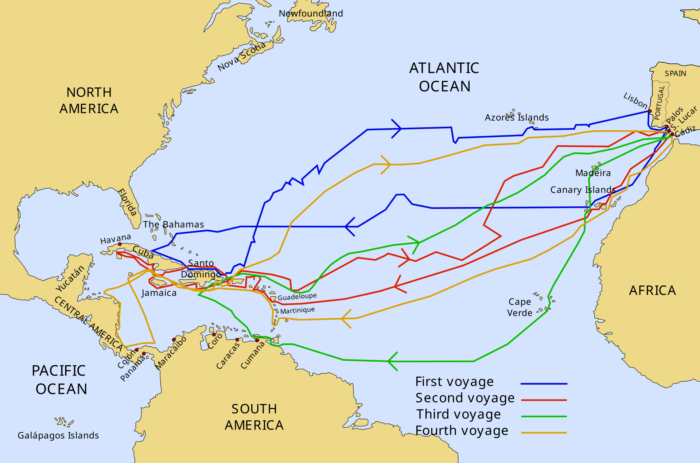print Print...
(by Caspar Weinberger Jr., HumanEvents.com) – In 1983, the still “new” President Ronald Reagan announced an innovative change in our entire defense strategy, a program labeled the “Strategic Defense Initiative,” and known simply as SDI. But that name would not stand alone for long.
Because what Reagan wanted to do was to develop a defensive shield against nuclear missiles. And, by God, that was just too threatening to the status quo, to the way things were usually being done to keep the peace concerning the obviously sensitive subject of nuclear bombs and the two great super powers, the United States and Russia, who had the lion’s share of those devices.
Right up until Reagan’s proposal for a missile shield, the tacit understanding of nuclear defense was all caught up in something called “MAD” — “mutual assured destruction” — which assumed that no one would launch a nuclear first strike because the other side would respond in kind, resulting in the utter destruction of both sides. No one was supposed to suggest any other way of keeping the peace.
The consensus view was we had to realize that the Russians were just like us and they would wipe us out if we wiped them out and since both sides realized this fact, no one would act: in chess parlance this was the big stalemate. No one would win, but no one would lose either because no one was crazy enough to launch the first nuclear missile. What a relief! Sort of…
Ronald Reagan described the MAD concept in terms of a western movie plot of which he was of course, as an actor, most familiar: “It was like having two westerners standing in a saloon aiming their guns at each other’s head-permanently. There had to be a better way.”
But the hand-wringers in the our own Congress and in the bureaucratic levels of the State Department, the intellectuals who abhorred any move that didn’t placate Russia, that did not adhere to “keeping the peace” the old fashioned way, essentially by mutual and quite permanent terror, were shocked and askance at such tom-foolery suggested by this brash Western cowboy actor, who had, in their view, by some horrible accident become the American President. They were sure he was going to cause the whole world to blow up. So they set about with the help of the liberal press (who else?) to make sure this insane idea of deliberately attempting to protect ourselves, of being terribly provocative towards the Soviets, was taken off the table immediately and permanently.
Their first move was to give SDI a new name: “Star Wars.” That was brilliant, of course, because it conveyed both fantasy, a lot of alien destruction stuff from the movie, and above all the idea that Reagan was taking our “war machine” up into space with a desire to destroy the other side-Russia– while protecting our own country.
Nothing could have been further from the truth. All Ronald Reagan wanted to do was to create a defensive weapon that could intercept incoming nuclear weapons and destroy them before they destroyed us.
“As the myths (about the SDI program) grew,” Ronald Reagan wrote, “one of them was that I had proposed the ideas to produce a bargaining chip for use in getting the Soviets to reduce their weaponry. I’ve had to tell the Soviet leaders a hundred times that the SDI was not a bargaining chip. I’ve told them I’d share it with others willing to give up their nuclear missiles.”
Indeed, that is what SDI has really been all about: going from MAD-mutually assured destruction to MAP-mutually assured peace: a glass at least half-empty to a glass at least half full. Is that such a bad idea? Anyone with an ounce of brain power knows it is not, and that frankly it is not only not a bad idea, it is downright brilliant.
But Ronald Reagan was not just a man among many lesser men of his time; he was also a visionary for the centuries. He also said:
“One day a madman could come along and make the missiles and blackmail all of us-but not if we have a defense against them…We all got together in 1925 and banned the use of poisoned gas. But we all kept our masks.”
Ring any bells? Here we are in 2008 and it doesn’t take an expert to know that the madmen, probably mad women too, are out there and moving closer and closer to controlling weapons of mass destruction. And we know they are the types that are trigger happy and would pull the switch just for the fun of it, MAD or not. And mad it most certainly is.
The trouble with the MAD policy and with so many well meaning but weak individuals who unfortunately so often control key elements of U.S. domestic and foreign policy is that their philosophies are based on the fact that the other side-whoever our enemies happen to be at a particular time-are somehow just like us.
And that is just not the case. It is true that, as my father, Cap Weinberger, Ronald Reagan’s first Secretary of Defense, stated on many occasions: “A great paradox of our national security posture is that without military strength, we have little leverage to secure real arms reductions.”
But that does not mean that we are like other conquering nations. We do not choose to conquer land and plant our flag upon them. We do not seek additional land or desire to enslave our people or others. We are a free nation and wish to remain so. And that would appear to be a great difference between our side and many others. A nineteenth century Frenchman who traveled to Russia, the Marquis de Custine remarked in his journal: “I do not blame the Russians for being what they are, I blame them for pretending to be what we are.”
And that is the great difference: we know what we are, a free nation who wants to remain that way and is willing, when asked, to help others to gain their freedom. Ronald Reagan recognized that we should not adhere to a policy that made us like the Russians, held hostage from defending ourselves by the threat of being annihilated. The Russians thought that if we could defend ourselves from them, we would do what they would do in similar circumstances: if they could defend themselves from us firing at them, why then certainly they were free to fire at us with no consequences.
However, Reagan diffused that argument entirely by saying he’d give them SDI technology too, if they got rid of their weapons. But an enslaved, territorial aggrandized nation can’t see what it means to be free and they were distrustful then and they still are. Ain’t it shame? Yes it most certainly is.
Today, the United States must be more vigilant than ever. The stakes are even much higher than they were in the ’80’s. Everything moves even faster and people seem ever more on a hair trigger. Nuclear arms have proliferated and the threats to peace and to our very existence as a species are profound.
Over 150 years ago, Alexis de Tocqueville pointed out:
“The ever increasing numbers of men of property who are lovers of peace, the growth of personal wealth which war so rapidly consumes, the mildness of manners, the gentleness of heart, those tendencies to pity which are produced by the equality of conditions, that coolness of understanding which renders men comparatively insensible to the violent and poetical excitement of arms, all these causes concur to quench the military spirit…in a democracy”
And it is a spirit that if allowed to languish will most definitely cause our downfall. We cannot ever assume that other hostile nations merely want to exist and keep themselves from being destroyed. Ronald Reagan and his superb team laid down the gauntlet to the Soviets and they were too distrustful to accept the offer. In the final analysis a free nation must never assume that others feel the same way. Therefore we must vigorously build the armaments necessary to defend ourselves and our way of life whatever other nations, less free than ourselves, may think about it.
SDI made sense when it was proposed in 1983 as it most certainly does today. It took that great visionary, the true man with the white horse, that symbol of Twentieth Century strength and goodness, the ultimate cowboy of the Lord, Ronald Reagan, to bring it down from the heavens for us and fight right up to his death to make it a reality.
Mr. Weinberger is the son of the late U.S. Defense Secretary Caspar Weinberger. A 1968 graduate of Harvard College, Weinberger is a writer and lecturer on world events. A former television writer, producer and director for NBC affiliate KRON-TV in San Francisco, he served in both California Gov. and President Ronald Reagan’s administrations. He now resides in Maine.
Copyright ©2008 HUMAN EVENTS, March 21, 2008. All Rights Reserved. Reprinted here on March 27th with permission from Human Events. Visit the website at www.humaneventsonline.com.
Questions
1. Fill in the blanks: (answers to this question found at the bottom of this page)
In a)_________________, President Ronald Reagan announced an innovative change in our entire defense strategy, a program labeled the b)______________________ and known simply as SDI. SDI was a defensive shield against c)_______________________.
“MAD,” also called d)______________________ assumed that no one would launch a nuclear first strike because the other side would respond in kind, resulting in e)_____________________________ of both sides.
Reagan wanted to create a defensive weapon that could intercept incoming nuclear weapons and destroy them before f)____________________________.
2. a) What is MAD?
b) What is Ronald Reagan’s SDI policy?
3. What is the problem with using MAD to keep our country safe from nuclear attack, according to Mr. Weinberger? (see para. 13-14 and 21 for the answer)
4. What do you think Mr. Weinberger’s purpose was for writing this commentary?
5. What do you think of Mr. Weinberger’s assertion that Ronald Reagan was right in changing the U.S.’s defense strategy from MAD to SDI, based on the premise that the real way to ensure our safety – establishing a means to intercept and destroy strategic nuclear missiles – eliminates the threat of an enemy’s nuclear weapons program?
Scroll down to the bottom of the page for the answers.
Resources
For information on missile defense click here. (Scroll down for an explanation to the opposition to missile defense.)
Read President Reagan’s speech explaining the SDI here.
Answers
ANSWERS TO #1:
1. a) 1983 (para. 1)
b) Strategic Defense Initiative (para. 1)
c) nuclear missiles (para. 2)
d) mutual assured destruction (para. 3)
e) the utter destruction (para. 3)
f) they destroyed us (para. 8)


